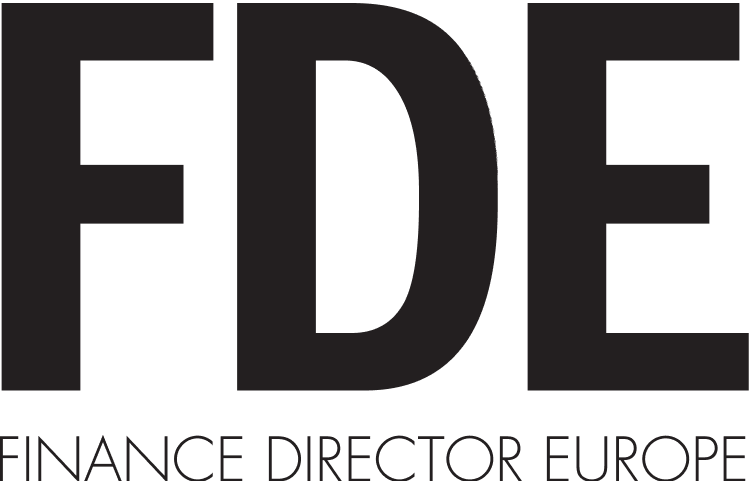
As the digitisation of finance operations truly takes hold, increasing numbers of CFOs feel the need to follow suit. The questions facing them are urgent and clear: how can we as a business generate more value; how can we be more effective in what we do; how can we be more efficient in terms of the way we manage our internal processes?
And while the journey towards digital transformation rarely begins from a single point, there does tend to be one fundamental aim. “Ultimately the primary driver is usually value,” explains Rash Hullait, VP strategic accounts, EMEA at HighRadius.
“Typically it means moving to some of the newer technologies, but ultimately the conversations are always underpinned by ensuring that there’s going to be some sort of outcome at the end of it, which is linked to a dollar value for that business.”
Key drivers
In practice, those drivers can take many forms. Hana Bísková, digital transformation principal at HighRadius, explains that there tends to be three principal causes. First, clients often have multiple systems, which can result in gaps in the reporting visibility results. That means they need to adjust to develop a better picture of the end-to-end process.
“Second, they are stuck with manual processes: everyday team members repeat the same tasks and that can have a real impact on team morale and retention,” continues Bísková.
This, she stresses, is a critical component in the transformation journey: how will it impact the people within the business charged with delivering best in class AR performance?

“We’re increasingly seeing companies now trying to look not only at levels of end customer satisfaction, but also to look at internal customers or employees,” Bísková adds.
“And it’s often the case that they may be a young team still using legacy systems, which doesn’t help companies maintain their teams. Churn increases, and inefficient and repetitive processes have an impact on staff retention.”
Bísková’s third key factor centres around new technology and how it enables innovation.
“Companies need to keep up the pace with their competitors – understandably, they feel that if they’re not doing it when others are, they will be behind the curve.” This, she explains, tends to be felt more at the top management level, where strategic focus on process improvement is imperative.
A tangled web
A closer look at client journeys shows that, for many businesses, especially those that may have grown through some form of acquisition, moving towards a more integrated digital solution for their AR system is driven by the complexity and inefficiency spawned by the ever-growing number of bolted-on systems and processes.

As new units are added, Hullait explains, legacy systems become more entwined and entangled, leading to all kinds of confusion and obfuscation. And even the best can fall victim to the ‘spaghetti’ syndrome: “Amazon is a good example, where they’ve tried to use the standard template but the minute you start to get into acquisitions, you’re bringing in different legacy systems, different architecture, as well as the physical elements there are the softer elements, such as corporate cultural nuances – not to mention the historic aspects.”
Hullait says the job for HighRadius is to “unravel that spaghetti” that companies have subconsciously created. “Obviously one of the key things when you make an acquisition is the speed of integration and the speed to value, and that’s once again an area where we can help, because we’re flexible in the solutions we provide,” he says.

Whether that’s auto-aggregating remittance from various sources, automation of cash reconciliation and deduction coding or a reduction in lockbox keying-in fees, HighRadius products sit alongside existing systems.
“Crucially, we’re not expecting companies to rip out existing infrastructure or ERPs, which would be an expensive business,” says Hulliat. “Instead, we focus on ultimately providing a solution that allows us to integrate with the existing technology landscape and existing systems architecture, and to complement and enhance the status quo.”
A perfect fit
That is reflected in the experience of Laurent Gueritaine, global process owner, customer invoicing to cash at Sanofi.
When the French pharma giant was looking to adapt and align processes across its global operations, it called on HighRadius for support.
“Most of the issue was actually more in the aligning of the organisation across several dimensions on the selection of a best of breed technology, and on the efficiencies that we were trying to achieve through that implementation,” he explains.
“There wasn’t really an incentive to change your process, as a consequence a lot of ERP implementations were quite lengthy.”
For Sanofi, as for others, one of the principle tools in the transformation is automation, where automating repetitive and time-consuming tasks can represent a step change away from older, more traditional processes.
Naturally, there is a growing clamour among finance teams to drive further automation. But Hullait says that while recent years have seen a great deal of hype in this field, CFOs must understand that in fact there exists a spectrum of automation.
“For instance,” he says, “you’ve got simple SQL scripts on one hand, along with RPA and the like, all the way through to AI. If you look at RPA, for example, typically that is what is happening, people will stand up POCs or even implement RPA-type technologies, which often fixes the issues within the process.” For HighRadius, however, simply automating the status quo represents a huge missed opportunity. “I think the old adage still holds true: you should re-engineer the process and then look into applying the technology.” However you cannot re-engineer without having a target technology in mind, otherwise its blank cheque with no end state. The tech makes the process of reenineering real.

Best in class
Having said that, things are changing. “In the past you had legacy systems and often you could almost break them to fit your processes,” Hullait explains. Now, however, new technologies, like those employed by HighRadius, incorporate what many would define as the best in class process.
“There wasn’t really an incentive to change your processes,” Hullait continues, “and as a consequence a lot of ERP implementations were quite lengthy and also very expensive with the development work that was ongoing in order to fit technology to, in essence, what was a bad process.” Now, however, with cloud technologies limited in terms of what extra functionality they can bolt onto existing ERPs, the scope for customisation of that technology is limited.
“And that’s where we come in; we’re filling the gaps,” Hullait says. “We complement a lot of these technologies like SAP and Oracle in terms of the functionalities that they offer. Historically, their raison d’etre has been accounting, so when you start looking at the peripheral activities around accounting, we go deeper into those technologies and we’ve got better functionality, which can be additive. But then it also drives out best in class processes, because you’re not then breaking the technology to fix a bad process.”
CASE STUDY
Duracell
Following an unsuccessful A/R outsourcing project, Duracell decided to bring operations back in house. At the same time, the company shifted to a new ERP system that entailed manual processing on SAP. This resulted in a severe lack of visibility among the teams, with collectors not knowing if a payment had been applied or not.
The company was especially keen to make progress in the following areas:
Cash Application: Manual processing and aggregation of remittances and payments led to an unnecessarily time-consuming process. The deduction coding process was also heavily reliant on a manual workforce.
Collections: There was low visibility into the payment status of customers, which led to confusion among the teams. They also lacked the ability to add extra customer information into invoices, and pulling data from web portals was completely manual.
Deductions: Duracell lacked visibility into the resolution time for deductions, and manual collaboration and aggregation of backup for trade deductions also caused an overall slow process.
In short, Duracell was aiming for four key outcomes:
- speed up processes
- free up analysts for higher value work
- improve visibility across the cash landscape
- improve responsiveness to customer needs.
Duracell decided to adopt a HighRadius Cloud Solution. By doing so, the company was able to auto-extract remittances from various sources without any manual intervention, while also auto-linking payments with the open invoices and ensuring automated deduction coding in an accurate manner. Easy deployability also ensured seamless integration with their existing ERP system.
The results were telling, with a range of indicators all pointing towards greater efficiency, visibility and flexibility – things that have proved central to improving Duracell’s operational performance. As Ganadeep Rey Patlolla, Duracell’s business systems consultant and program manager puts it: “Now, once HighRadius did all the heavy lifting, the grunt work, to put them all in one place, it meant that the analyst had to just work on the research.”
Results
Ultimately, Duracell was able to achieve:
- 60% savings in employee resource costs
- same day auto-cash posting and higher speed of reviewing invoices
- percentage improvement in cash application hit rate
- modifying capture rules and creating one standardised rulebook.






